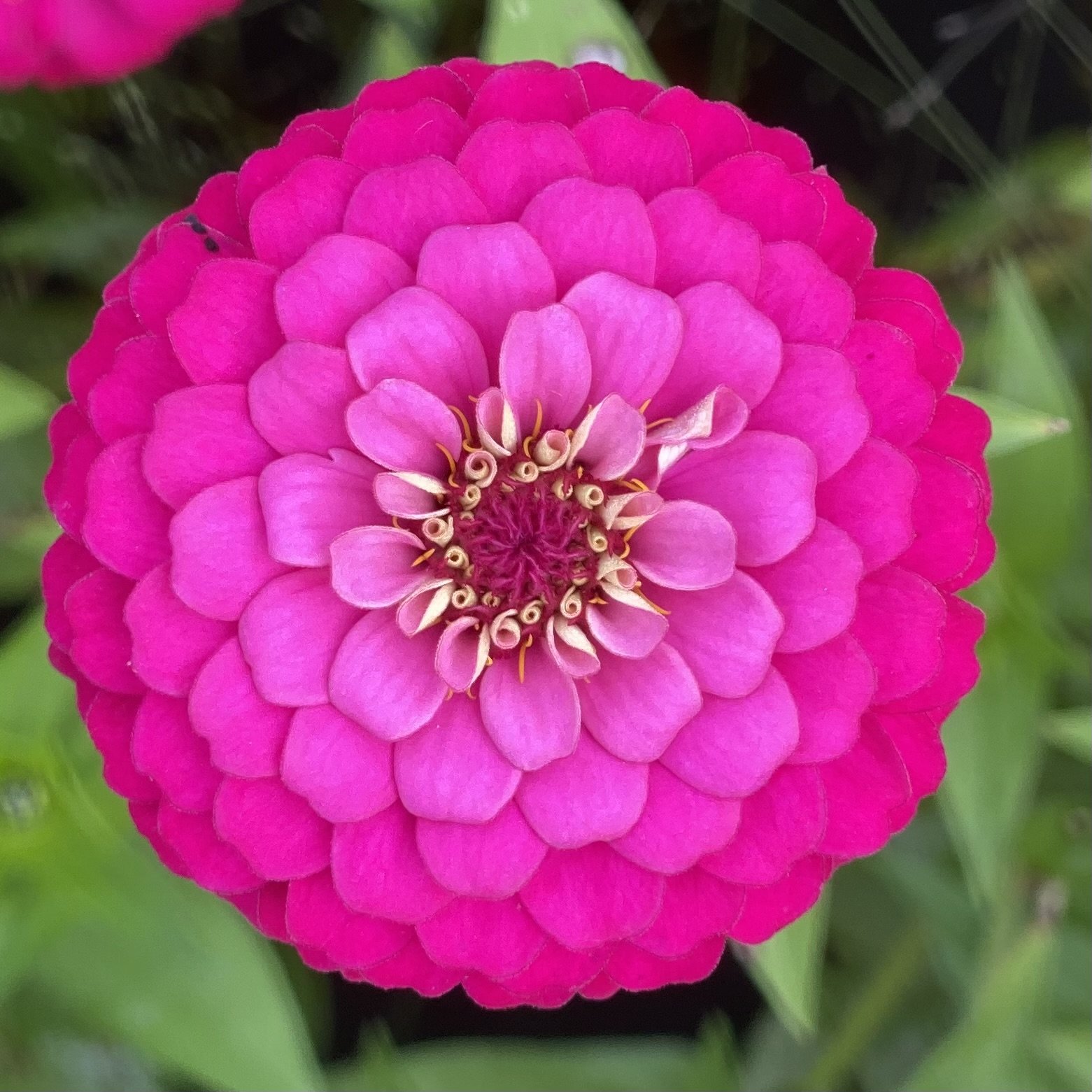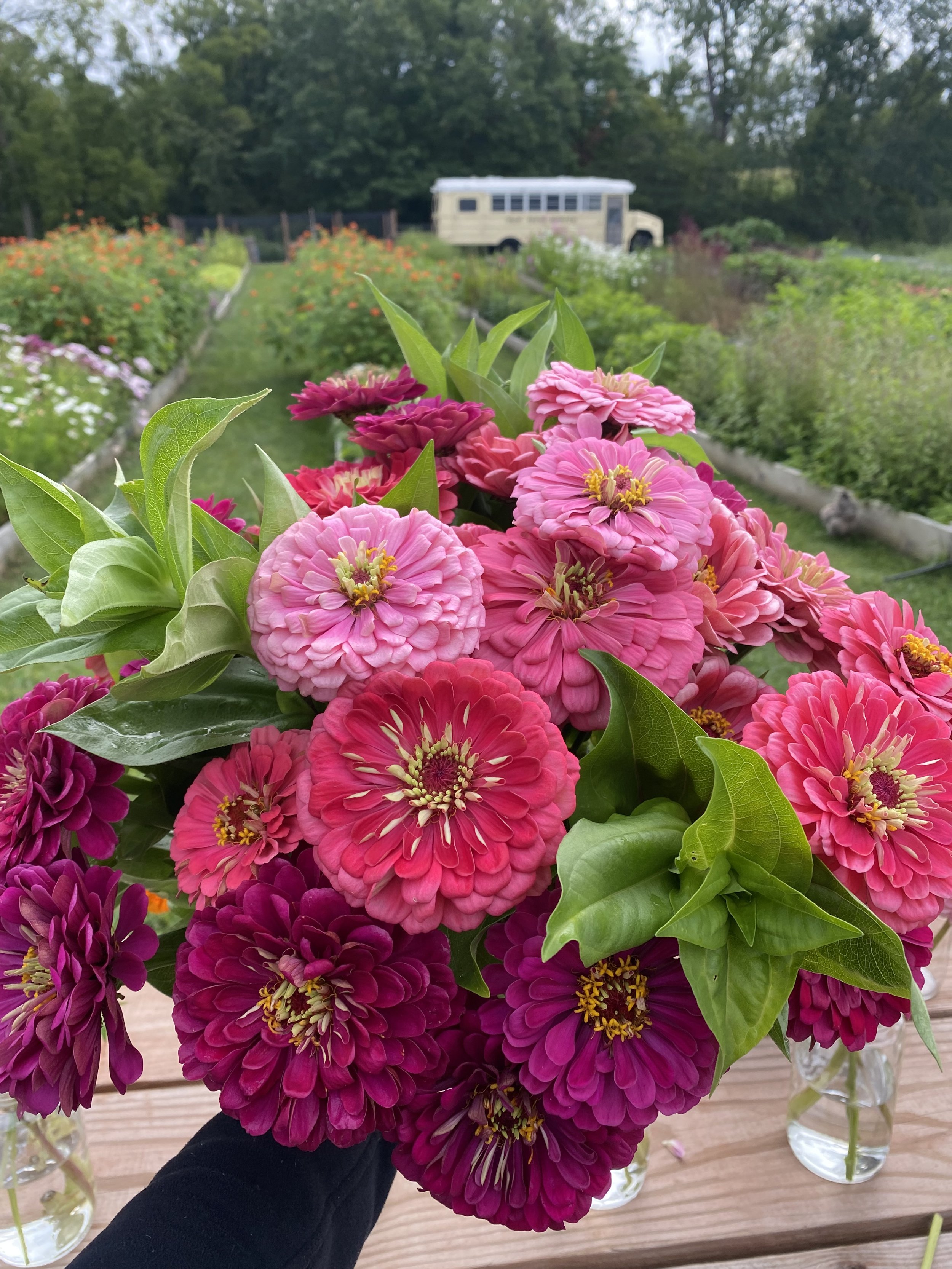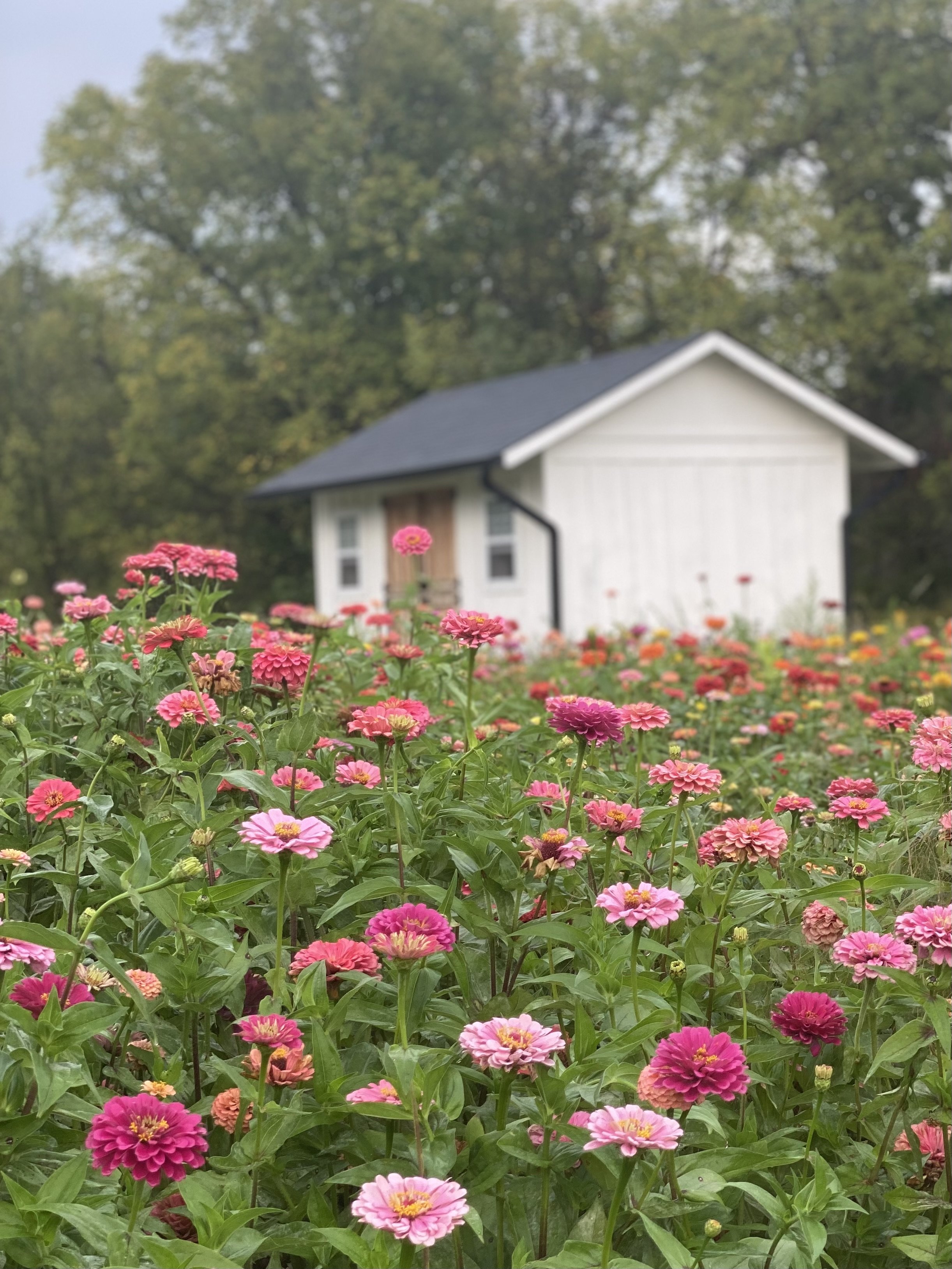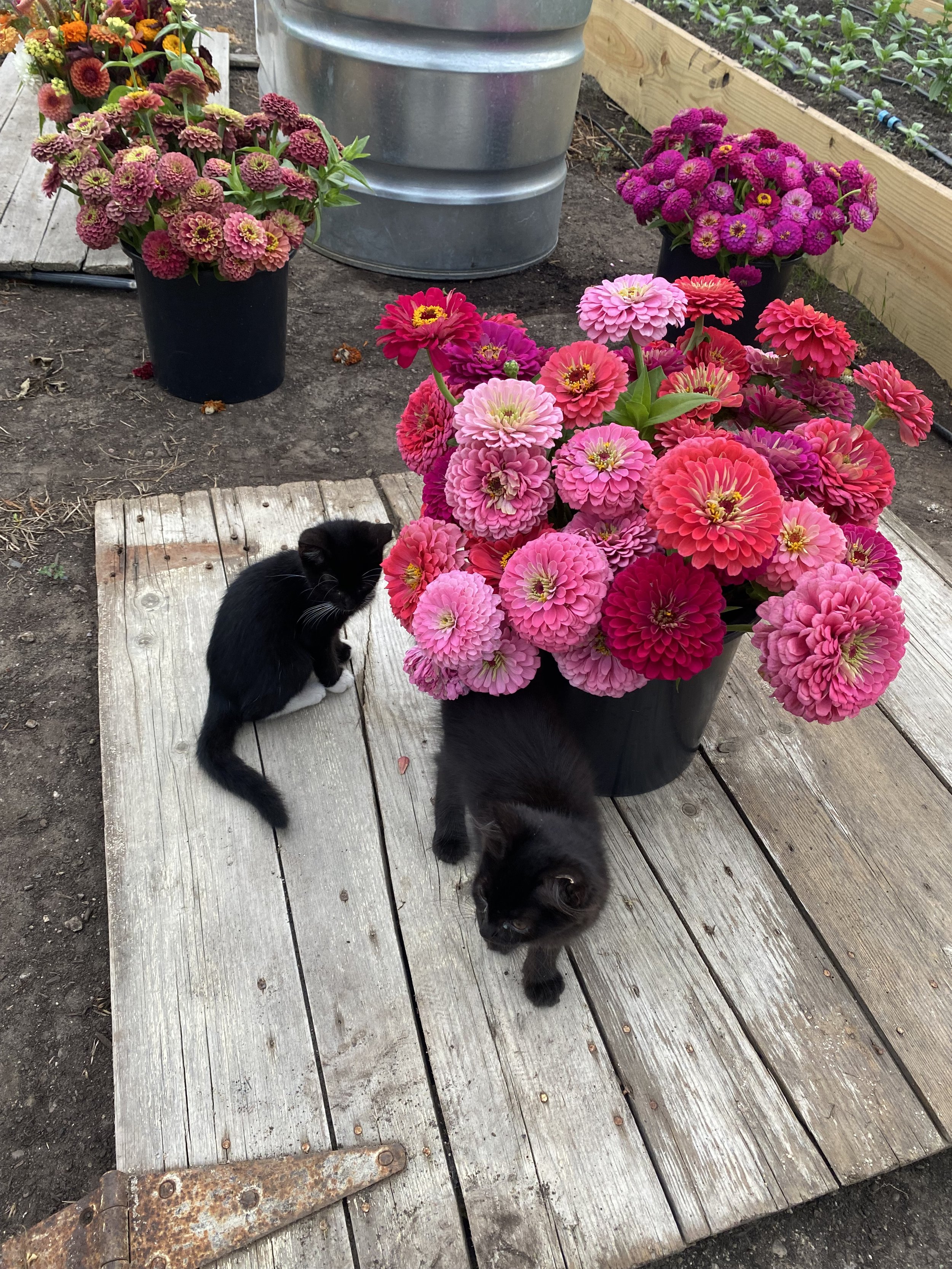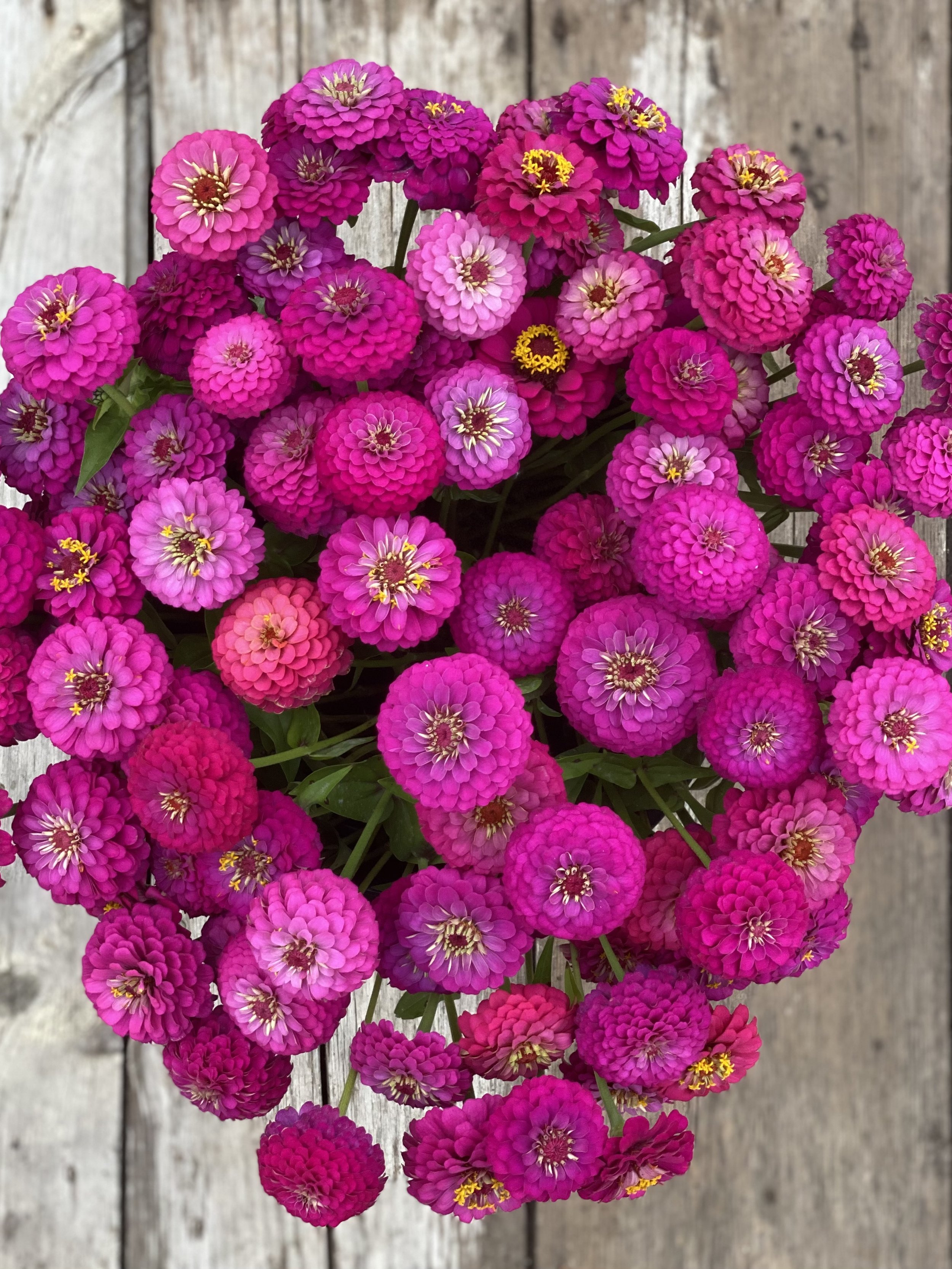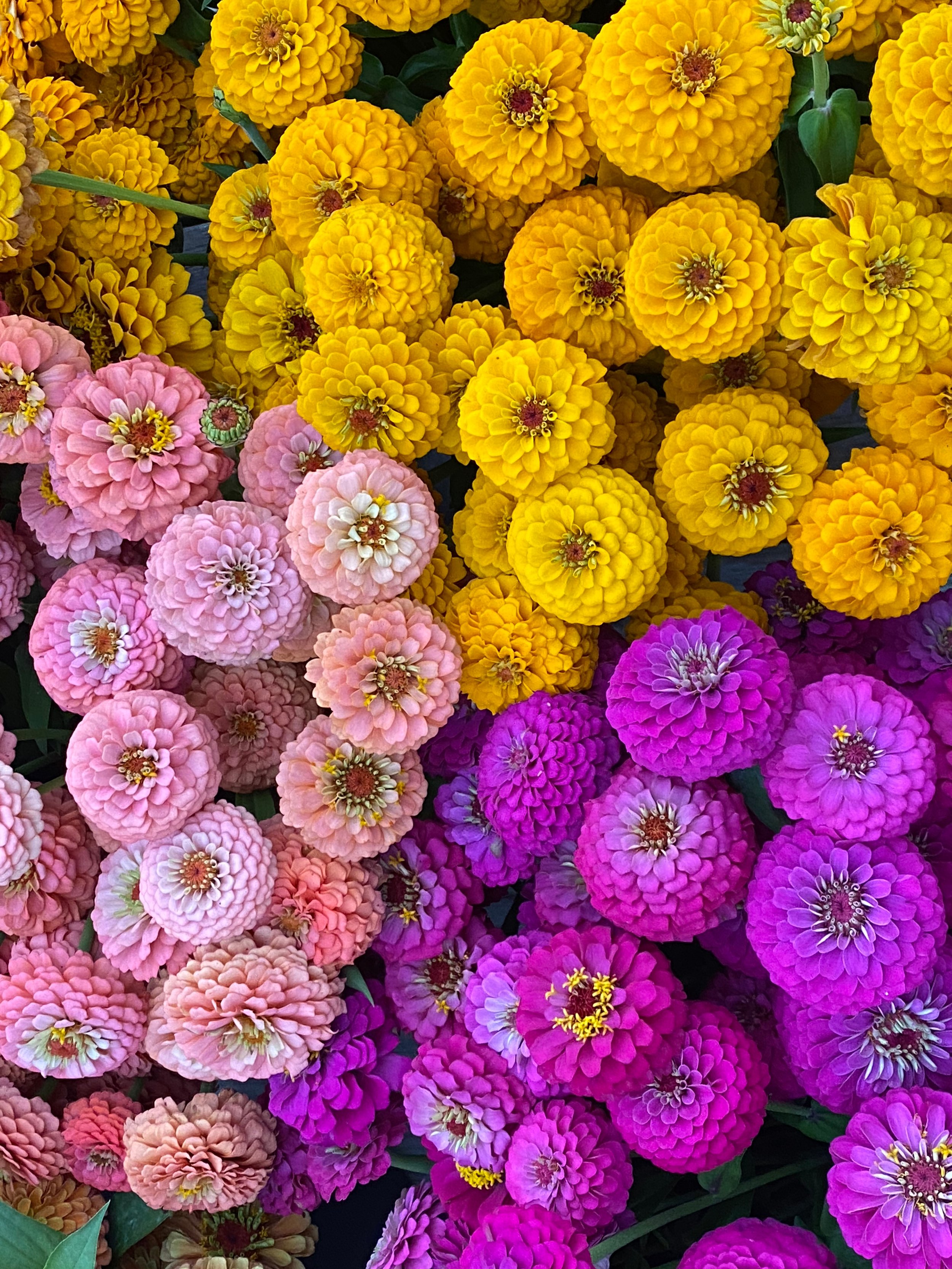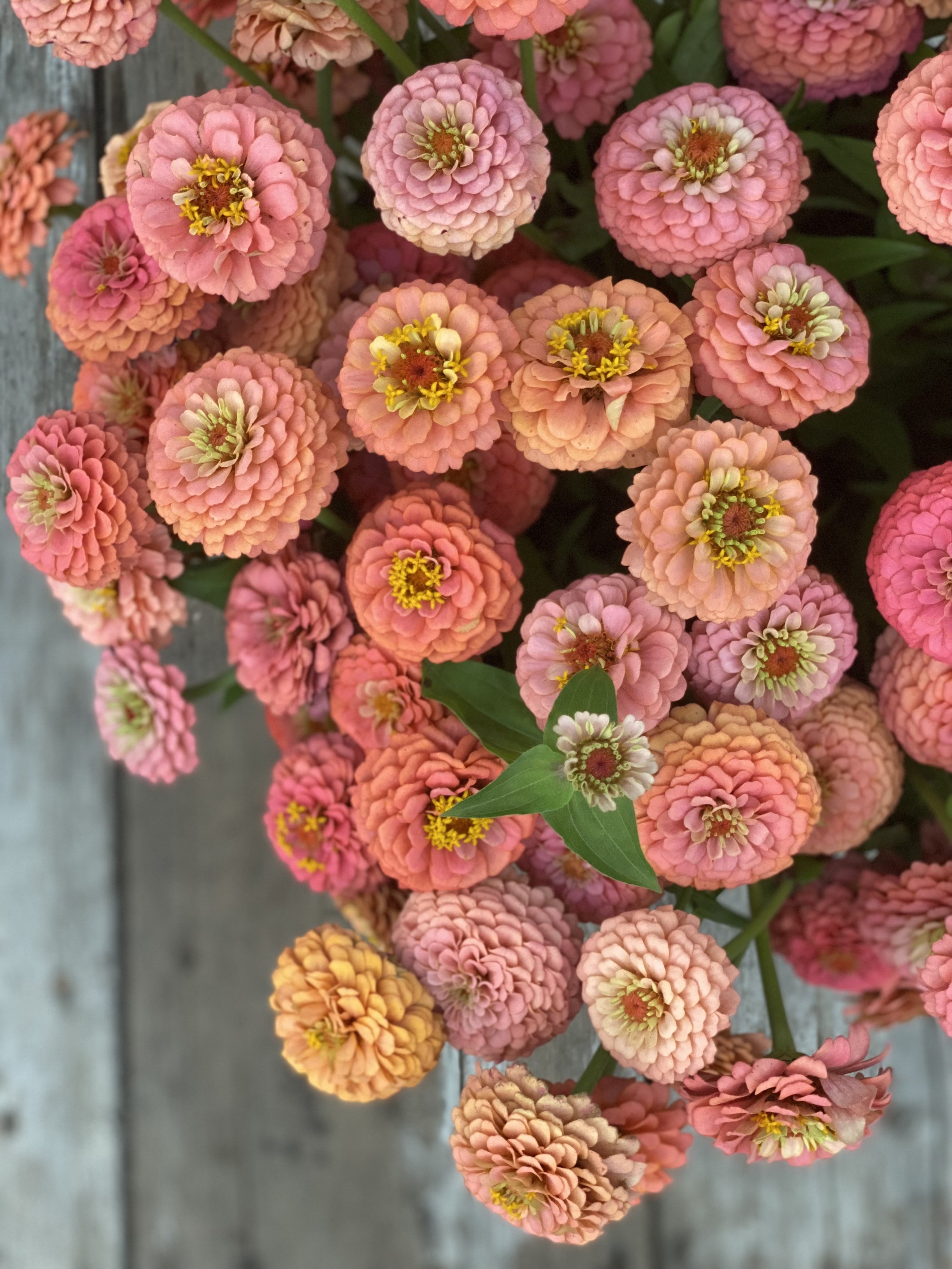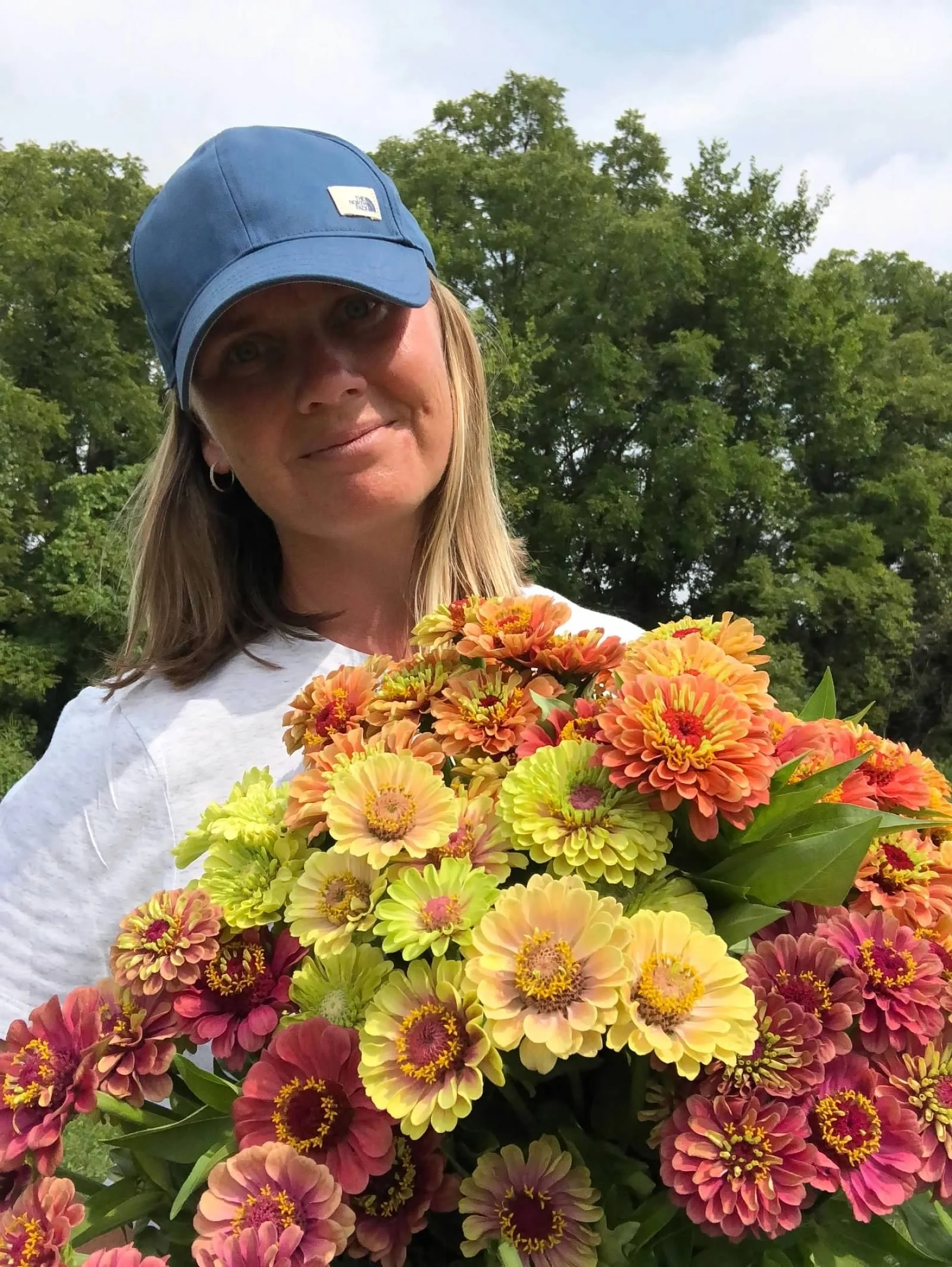Three Must-Grow Zinnia Varieties
When it comes to planning your cut flower field, consider zinnias as one of your staples. While they aren’t showstoppers like dahlias and ranunculus, they have earned their place in every garden. Zinnias have so many incredible benefits that make them a great choice for any flower farmer. From simplicity and productivity to a rainbow of beautiful color varieties.
The Benefits of Growing Zinnias
Zinnias are true workhorses in the garden. They’re a cut and come again flower, meaning once they’re cut, they’ll continue to produce flowers. This is great for maximizing space because the more you cut them, the more they will produce!
Zinnias can also be direct sown right in the dirt outside after there’s no threat of frost. Many cut flower varieties need to be started in seed trays indoors before being transplanted outside to ensure you can maximize their growing season. But with zinnias and other direct-sow flowers, you don’t have to take the extra time and energy to start seeds indoors if you don’t want to. This also makes succession planting much easier.
(If you want to learn more about how to grow zinnias and 9 other must-grow varieties, click here.)
Another great quality about zinnias is that they come in a wide variety of colors and sizes. You have so many options in bloom size and color—whether you want a large, showy bold flower or a delicate, subtle, smaller option. There are so many options, I actually considered growing only zinnias one season.
My 3 Must-Grow Zinnia Varieties
When it comes to the different types of zinnias that any flower farmer should grow, I think these three varieties take the cake: Benary’s Giants, Oklahoma Series, and Queen series. These are the only varieties I grow.
Benary’s Giants
Benary’s Giants are perfect for flower farmers looking to produce large, showy flowers. These zinnias can grow up to 5 feet tall and produce bright, double blooms in a variety of colors (13 to be exact!). They’re perfect to use as focal flowers in arrangements. In fact, I typically use Benary’s Giants as my focal flower until dahlias start blooming. I make my own mix of wine, bright pink and purple colors.
Oklahoma Series
Oklahoma zinnias are a smaller variety that typically grow to around 2-3 feet tall. Their smaller blooms make them a great accent flower in arrangements. In addition to being a beautiful variety, they’re also incredibly prolific and more resistant to powdery mildew than other varieties. Oklahomas come in many colors but my faves are salmon, carmine, and pink.
Queen Series
The Queen series is my absolute favorite. I think they were named Queen for a reason! With more antique and sophisticated colors, Queen series zinnias are a great option to expand your color palette.
While most of the Queen blooms have lime colors at their centers, the outer colors can range from purple, orange, pink, and blush. I like to grow Queen Red Lime and Queen Lime Orange, and they look good with almost everything. Most Queens, but not all, are double blooms.
FAQs
Are zinnias perennial?
Zinnias are annual plants, meaning they typically only live for one growing season. They don’t come back year after year like perennials do. However, in warm climates, some zinnia varieties may reseed themselves and come back the following year.
Which zinnia has the largest bloom?
Bernary’s Giants make the largest blooms, which is one of the reasons they’re on this list. The blooms grow to 4-5 inches across.
How many zinnia varieties are there?
There are more than 20 zinnia varieties available. With many flower farmers breeding new varieties, it’s hard to give an exact number.
Can I scatter zinnia seeds?
If you’re growing zinnias to look at in your garden, you can scatter seeds for a more cottage garden feel. However, if you’re growing for cut flower production, I don’t recommend scattering. You should plant seeds for optimal space and yield. Plant in rows with 9-inch spacing.
Do you sow indoors or direct seed outdoors?
I recommend starting your first succession indoors under lights. By doing so you will have blooms generally 4 weeks sooner. Then, direct sow subsequent successions.
Where is your favorite place to source zinnia seeds?
My go-to source for zinnia seeds is Johnny’s Selected Seeds.
10 Best Cut Flowers to Grow Your 1st Season
Learn how to plant, grow and harvest 10 varieties every gardener should grow.

